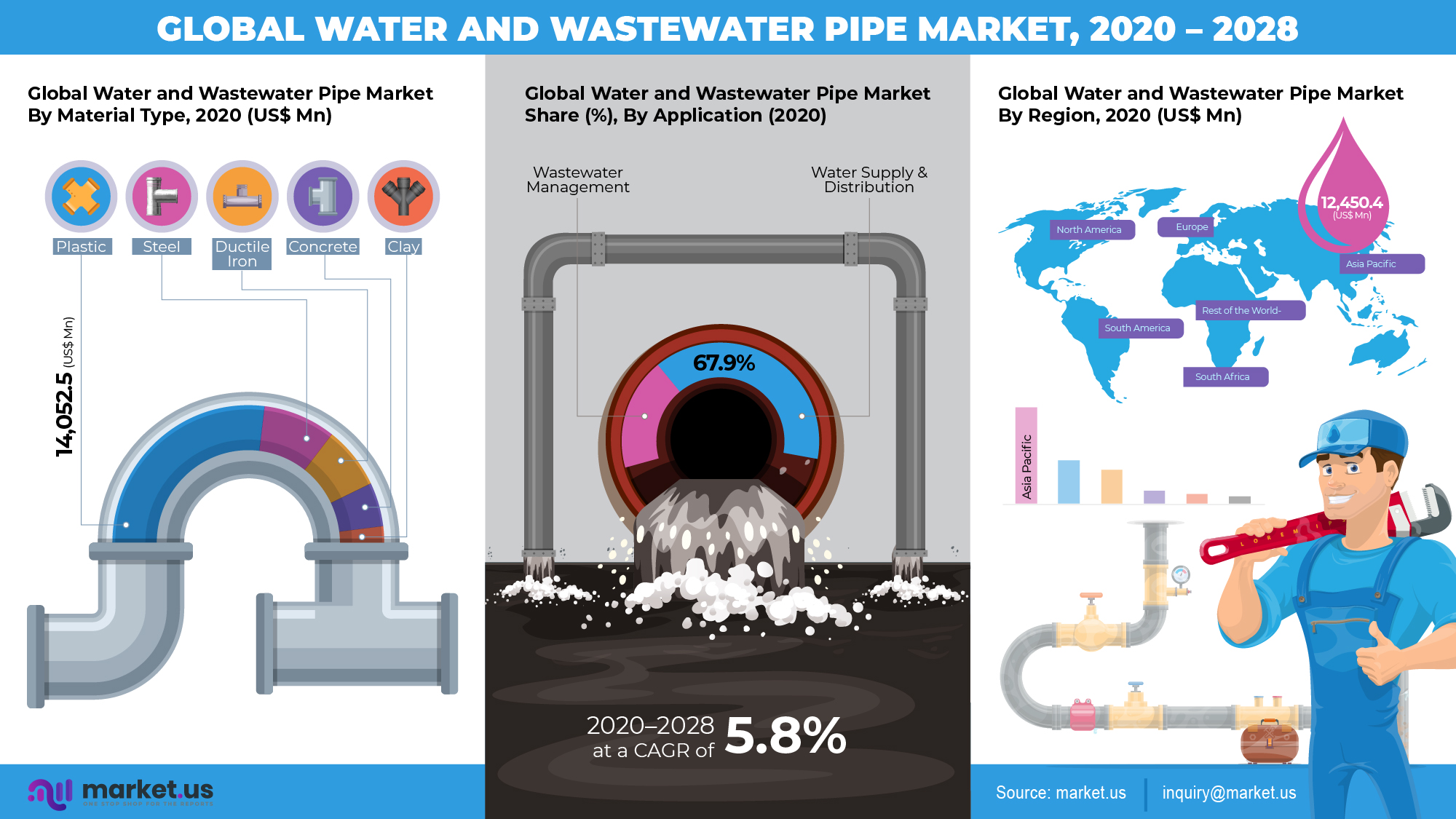
Global Water and Wastewater Pipe Market Infographics Description:
- The global water and wastewater pipe market is estimated at the US $ 26,108.9 Mn in 2020.
- The global water and wastewater pipe market is projected to reach US $ 40,959.9 Mn in 2028 at a CAGR of 5.8% from 2021 to 2028.
- Amongst material types, the plastic segment in the global water and wastewater pipe market is estimated to account for a majority revenue share of 53.8% by 2020 end.
- Among all the application segments, the wastewater management segment is expected to register the highest CAGR of over 7.4%, followed by water supply & distribution.
- Amongst end-use segment, the municipal segment in the global water and wastewater pipe market is estimated to account for a majority revenue share of 41.7% by 2020 end.
- Asia-Pacific market is expected to dominate the global water and wastewater pipe market. It is expected to account for the largest market revenue share than that of markets in other regions.
- Companies profiled in the report are Compagnie de Saint-Gobain S.A, China Lesso Group Holdings Limited, Aliaxis S.A, Mexichem, S.A.B. de C.V, Sekisui Chemical Co., Ltd., Tenaris S.A, Welspun Corp Limited, Nan Ya Plastics Corporation, Advanced Drainage Systems, Inc., Tata Steel Limited, Wienerberger AG, and ISCO Industries, LLC.





